Results 1,851 to 1,860 of 12094
Thread: Anandtech News
-
05-11-12, 12:30 AM #1851
Anandtech: Cubitek HPTX ICE Review: How Far Aluminum Can Go
Aluminum has been experiencing a bit of a renaissance in the notebook industry, spearheaded largely by Apple and now Intel's ultrabook initiative, but as a construction material for desktop enclosures it's largely been a specialty item. Most manufacturers use it in isolated places, usually as an accent, with entire cases built out of it becoming largely the purview of Lian Li...and not too many others.
Cubitek, on the other hand, has seen fit to employ it for an entire new line of cases under the "ICE Series". Five enclosures all using an almost entirely aluminum chassis and finish, ranging from the Mini-ITX "Mini ICE" all the way up to the grandaddy of them all and the enclosure that we have in for review today: the "HPTX ICE." The Cubitek HPTX ICE is as big as it gets and is able to support the biggest motherboards on the market, every spec from Mini-ITX all the way up to EATX and HPTX, and it has a supersized price tag to boot. But is it worth it?
More...
-
05-11-12, 11:00 AM #1852
Anandtech: OCZ Announces 64GB Vertex 4
OCZ announced yesterday via their Twitter profile that a 64GB version of their Vertex 4 will soon be available. Vertex 4 is based on a second generation OCZ/Indilinx controller, named the Indilinx Everest 2. However, it was later revealed that the hardware is actually from Marvell. We reviewed the 256GB and 512GB Vertex 4 SSDs about a month ago and came away very pleased with how the drives performed. The Vertex 4 product page has also been updated with specifications for the 64GB model, which we've summarized in the table below:
As expected, there is a decline in performance when moving from a sixteen package design to an eight package design. Random write unsurprisingly takes the biggest hit but 50K IOPS is still great for a 64GB drive. For comparison, a 60GB Vertex 3 is rated at 60K IOPS and a 64GB Plextor M3 at 40K IOPS. Overall the 64GB Vertex 4 is at the upper spectrum of ~64GB SSDs and it presents very promising performance figures.OCZ Vertex 4 Specifications Capacity 64GB 128GB 256GB 512GB NAND 2Xnm MLC Number of NAND Packages 8 16 16 16 Number of Die per Package 1 1 2 4 Sequential Read 460MB/s 535MB/s 535MB/s 535MB/s Sequential Write 220MB/s 200MB/s 380MB/s 475MB/s 4K Random Read 70K IOPS 90K IOPS 90K IOPS 95K IOPS 4K Random Write 50K IOPS 85K IOPS 85K IOPS 85K IOPS Street Price N/A $150 $300 $650
OCZ did not announce any specific availability other than "soon", but I contacted OCZ and will update this article once I receive a reply. Pricing is also unknown as of now. We will try to get our hands on a review sample as soon as possible, and Anand also has a 128GB sample in the house, so keep your eye on our SSD Bench section if you're in the market for a new drive.
More...
-
05-11-12, 01:00 PM #1853
Anandtech: A First Look at Thunderbolt on Windows with MSI's Z77A-GD80
I finally made the transition to a notebook as my desktop last year, a move many had made years prior. Quad-core mobile Sandy Bridge and good SSDs made the move simple for me, but Thunderbolt eventually made it near perfect. With only two drive bays in my notebook (I ditched my optical drive so I could have another SSD, something Brian Klug did back in 2010), there wasn't any room for good, high-performance, mass storage. Thunderbolt solved this problem for me.
Co-developed by Apple and Intel, Thunderbolt is a tunnel that carries both PCIe and DisplayPort traffic to the tune of 20Gbps per channel (10Gbps up and down). In the past, whenever you wanted to add a PCIe device (LAN, audio, high-speed storage, etc...) you needed to physically install that device in your system either via an ExpressCard slot on a notebook or via a PCIe slot on your desktop. Thunderbolt acts as a decoupler for PCIe devices, allowing you to put controllers that would traditionally lie inside your system outside of it, or even inside another device like a display. That's where the DisplayPort support comes in.
Apple's Thunderbolt Display is the perfect example of what Thunderbolt can be used to do. Take a DisplayPort panel, integrate Gigabit Ethernet, Firewire 800, audio and USB controllers and you've got Apple's Thunderbolt Display. In theory, you could connect a system that had none of these things, and the functionality would be provided exclusively by the display. Decoupling hardware like this allows OEMs to build thinner and/or smaller form factor machines (think Ultrabooks/MacBook Air), while allowing for full functionality when connected to a display. By carrying DisplayPort over the same cable, you can have a single cable that both extends functionality and connects your small form factor machine to a larger monitor. Thunderbolt enables the modern day dock for notebooks.
For all of last year, Thunderbolt was an Apple exclusive. This year, starting with the launch of Ivy Bridge, Thunderbolt is coming to PCs. We'll see it on notebooks as well as some desktop motherboards. Today we have the very first desktop motherboard with Thunderbolt support: MSI's Z77A-GD80.
Read on for our full preview of the first Thunderbolt PC motherboard.
More...
-
05-11-12, 01:00 PM #1854
Anandtech: NVIDIA Q1 FY2013 Earnings Report: $924M Revenue, $60M Net Income
As earning season wraps up NVIDIA has released their earnings for Q1 Fiscal Year 2013 (Feb-April 2012).
For the first quarter of FY2013 NVIDIA booked $924M in revenue, with a net income of $60M. This is compared to $962M in revenue with $135M in net income for Q1 of FY2012, meaing for a year-over-year basis NVIDIA’s revenue is slightly down while their net income has taken a larger hit.
Looking at NVIDIA’s revenue breakdown, the biggest hit was to NVIDIA’s consumer GPU business (GeForce), where revenues declined by $58M. Otherwise the professional solutions group (Tesla/Quadro) and consumer products (Tegra) were both up slightly compared to last year.NVIDIA Q1 FY2013 Financial Results Q1 FY2013 Q4 FY2012 Q1 FY2012 Revenue $924M $953M $962M Net Income $60M $116M $135M
So why have revenues and profit margins fallen since Q1 FY2012? The biggest change for NVIDIA is that the next product cycle for the GPU side of their business started more than 15 months after the previous cycle. For example while the GTX 580 launched in November 2010, the GTX 680 didn’t launch until March of 2012. Consequently while NVIDIA was in the midst of selling a number of new GTX 500 series cards by Q1 FY2012, they got a late start with the GTX 600 series.NVIDIA Revenue Divisional Breakdown Q1 FY2013 Q4 FY2012 Q1 FY2012 (Consumer) GPU $579 $621M $637M Professional Solutions 212 221 201 Consumer Products (Tegra) $132M $109M $122M
NVIDIA sells GPUs year-round of course, but outside of holidays their strongest periods are the months following major product launches, while their weakest periods are the months immediately preceding a major product launch as customers hold off for the next generation of cards. NVIDIA is also at the mercy of Intel and AMD to some extent for the same reason; the launch of Ivy Bridge was good for NVIDIA’s sales, but because of Ivy Bridge everyone in the PC industry saw lower sales in the first part of the year before Ivy Bridge launched.
At the moment the biggest cloud hanging over the head of NVIDIA’s GPU business is supply issues. As we’ve seen from the launch of the GTX 680 and GTX 690, NVIDIA’s partners have been unable to keep their latest generation of video cards in stock due to a lack of GPUs, and that’s only finally started to break with the launch of the GTX 670 yesterday. In their earnings call NVIDIA updated their investors on the status of 28nm production over at TSMC, and while the situation is improving it’s still not great.
As far as 28nm yields go things are looking decent. NVIDIA has said that they believe that TSMC’s 28nm process is probably the best of any new node that TSMC has ever done. Like any other process yields will continue to improve over the lifetime of the process of course, but as it stands what NVIDIA is reporting is nothing like the teething issues that 40nm went through in 2009/2010.
The real problem for NVIDIA right now continues to be overall capacity. They have been rather straightforward in stating that they need more 28nm wafer allocations and they need them yesterday. As it stands NVIDIA is expecting to be supply constrained at the wafer level throughout the end of the year, slowly becoming less constrained as capacity improves. For at least the next quarter however this means NVIDIA will be unable to meet channel demand and will have no problem selling everything they can get. This also means that the shortage of GTX 680 and GTX 690 cards may very well continue for another quarter.
Consequently NVIDIA’s dip in GPU revenue is being attributed to this shortage. High-end desktop sales in particular were the biggest contributor here; in spite of a general decline in desktop sales, desktop GPU sales are still such a large part of NVIDIA’s GPU revenue that the lack of 28nm GPUs there is adversely affecting NVIDIA’s bottom line. NVIDIA has used their limited capacity to launch their premium notebook and desktop GPUs first, and even then NVIDIA says they could have shipped many more GPUs if they had them. Kepler GPUs have higher margins on them than the aging Fermi lineup, so it’s in NVIDIA’s best interests to shift as much over to Kepler as quickly as possible. To that end NVIDIA is expecting 30% of their GPUs to be 28nm this quarter, with that improving in the future.
As for NVIDIA’s other major businesses, NVIDIA’s Tegra group has done better than expected, which is a big part of the reason that the consumer products group has seen revenue grow over last year. Although the first Tegra 3 products technically shipped at the end of last year, NVIDIA is still fairly early into Tegra 3’s lifecycle as the first Tegra 3 phones just now being released. So NVIDIA is hoping that they’ll be able to continue to grow their market share this year on strong sales of Tegra 3, particularly in overseas markets where there’s greater demand for quad-core SoCs and LTE isn’t as prevalent.
Speaking of market share, as it stands today nearly half of all Tegra SoCs are going into tablets. That’s going to shift some as more Tegra 3 phones are released (and again when WinRT is released), but it’s a good reminder of just how much traction NVIDIA has gained in the tablet market in very little time. And unlike the GPU space NVIDIA shouldn’t have any supply issues here; since Tegra is still on TSMC’s 40nm process supplies are plentiful and yields are high.
More...
-
05-12-12, 08:01 AM #1855
Anandtech: ASUS P8Z77-V Deluxe Review - Know Your SKU
Now that Panther Point is in full swing, and perhaps Sandy Bridge processor stocks may start to dwindle in favor of Ivy Bridge, market segmentation of motherboards is all too critical. We have gamers (budget and enthusiast), casual users, audio enthusiasts, HTPC users, storage users, power users, enthusiasts, modders, silent users, overclockers, extreme users or perhaps a combination of many. Therefore, when it comes to designing a range of boards, a motherboard manufacturer has priority targets. They can design either a product to go for one target, or a product to cover several. ASUS have a minimum of 13 boards in their current Z77 lineup (not covering H77), with a few more still to be released. One of those 13 is the P8Z77-V Deluxe, a high end product focused on power users who want extremes of functionality and the best of most worlds - an Intel NIC (+Realtek), more SATA, dual band WiFi, fan control, provision for Thunderbolt as well as regular ASUS features such as BIOS Flashback, Q-LED, the BIOS itself and AI Suite software. Even with all of this, it also transpires that the Deluxe is quite good at throughput and IO as well.
Read on for our review.
More...
-
05-13-12, 07:00 PM #1856
Anandtech: A Tale Of Two Thunderbolt Storage Devices: Seagate's GoFlex Desk and Weste
I remember the early days of the USB-vs-FireWire wars like they were yesterday, although Wikipedia reminds me that they were more than a decade ago (sigh). USB 1.0 arrived in 1996 but didn't begin to see broad adoption until two years later with version 1.1. When FireWire 400 (aka IEEE 1394a) emerged on Apple systems in 1999, its backers scoffed at USB's comparatively diminutive 11 Mbps peak (and much lower practical) bandwidth.
Intel and its partners' response was swift; USB 2.0 came on the scene in 2000. Its 480 Mbps theoretical peak bandwidth, coupled with Intel's refusal to integrate FireWire support within its core logic chipsets, doomed FireWire to niche status in spite of the subsequent emergence of the 800 Mbps IEEE 1394b variant.
Yet as anyone who's used a USB 2.0 hard drive or flash drive knows, the external bus's read and write performance still leave a lot to be desired, especially for video and other large-file-size material. eSATA attempted to address the issue, but its storage-centric focus left OEMs unwilling to adopt it en masse, from both incremental-cost and incremental-connector perspectives. What the industry wanted was an equally versatile but speedier successor to USB 2.0...
...and now it's got two. Yep, another standards war - except not in the traditional sense, as these two are complementary. The USB 3.0 specification was released in late 2008, with first products available beginning one year later. Designed primarily as a replacement for USB 2.0, it delivers 4.8 Gbps transfer speeds, along with discrete transmit and receive data paths. And courtesy of Intel's Ivy Bridge integration, USB 3.0 will soon become pervasive in a diversity of PC platforms and form factors. But more than a year ago, Intel and partner (and customer) Apple productized a copper-based version of an Intel-proprietary interface called Thunderbolt, formerly known as Light Peak.
Each Thunderbolt port handles 40 Gbps of aggregate bandwidth, consisting of two pairs' worth of distinct 10 Gbps transmit and receive lanes. Thunderbolt isn't so much about enabling the connection of discrete storage devices (although it has been used for just that by many early peripherals), but new PC form factors instead. If you have to give up GigE, Firewire 800 and a gigantic screen to build a sleek Ultrabook, Thunderbolt will give you access to those things via an external display. Did I mention that Thunderbolt carries DisplayPort as well as PCIe?
To date Thunderbolt has mostly only appeared on Macs, the Apple exclusivity period is now over. This year we'll see the emergence of more affordable second-generation controller ICs, resulting in Thunderbolt showing up in a diversity of PC platforms and form factors.
Anand has done several in-depth Thunderbolt peripheral reviews so far. And today we've got two more products up for evaluation; Seagate's 2 TByte GoFlex Desk HDD coupled with the company's just-in-production Thunderbolt Adapter, and Western Digital's two-HDD Thunderbolt Duo. Let's have a look, shall we?
More...
-
05-14-12, 07:30 AM #1857
Anandtech: Buffalo Technologies Announces Availability of 802.11ac Router and Media B
At the 2012 CES, we reported on one of the first public 802.11ac technology demonstrations at the Buffalo Technologies booth. Fast forward a few months, and Netgear seemed to have stolen the march on Buffalo Technologies by announcing their R6300 802.11ac model on April 26th. However, Netgear's announcement turned out to be a paper launch. Today, Buffalo Technologies is announcing their first 802.11ac router model and also making it available for purchase right away. Coupled with their 802.11ac media bridge (also launching today), it enables consumers to take advantage of the 802.11ac's Gigabit Wi-Fi capability right away.
AirStation WZR-D1800H Wireless Router
The WZR-D1800H wireless router has 5 GbE ports (1 WAN (Internet access, connected to the modem) + 4 LAN (for the internal network)) and 1 USB 2.0 port with a physical eject button. The industrial design is also improved over the earlier AirStation models, with the sharp edges being replaced by the more pleasing rounded corners.
Internally, the router's 5 GHz band supports 1300 Mbps theoretical throughput with 802.11ac, which is also backward compatible with 802.11n. The 2.4 GHz band is supported with a 3x3 802.11n radio for 450 Mbps of throughput. Simultaneous dual band operation is possible, and so, Buffalo Technologies advertises this as having a total throughput of 1750 Mbps across both the bands. Note that in the pure 802.11n mode, one can get 900 Mbps of total theoretical throughput (450 Mbps in 5 GHz and 450 Mbps in 2.4 GHz).
The absence of any PCs / computing devices with 802.11ac support might turn out to be a bit of a dampener for prospective consumers, but Buffalo Technologies is also introducing a 802.11ac wireless media bridge to enable consumers to take advantage of their 802.11ac router's full capabilities.
WLI-H4-D1300 Wireless Media Bridge
The AirStation AC1300 / N450 is a 4-Port Gigabit Dual Band Wireless Ethernet Bridge intended to extend the capabilities of wireless networks. It makes for an ideal companion to the WZR-D1800H router because of its ability to extend 802.11ac wireless signals to wired devices.
The device has two wireless radios to support 802.11ac and 802.11n in the 5 GHz and 2.4 GHz spectrums. The 802.11n network is dual band (450 Mbps / band), and the wired ports are all Gigabit. We have backward compatibility with 11a, 11b, 11g and 11n.
Buffalo Technologies indicated that both of these products would carry a street price of $179.99. They are available for purchase starting today at Fry's, Frys.com and Newegg.
More...
-
05-14-12, 08:30 AM #1858
Anandtech: Corsair Performance Series Pro (256GB) Review
Shortly after the Plextor M3 review went live, I received numerous emails asking us to review Corsair's Performance Series Pro. Your voice was heard and we went and asked Corsair for a review sample, and here we are with the results.
There aren't too many Marvell SSDs on the market so the Performance Pro stole my attention immediately. When testing a SandForce drive, you pretty much know what to expect. Only Intel uses in-house firmware whereas the rest use the firmware that SandForce provides. That limits differentiation a lot. When it comes to Marvell, things are a lot more open and interesting. Firmwares are often proprietary and that's why you never know what to expect. Several readers pointed out the similarity between Corsair's Performance Series Pro and Plextor's M3 & M3 Pro. Maybe all Marvell drives don't carry an in-house firmware after all? Read on to find out if that's true and see how the Performance Pro fares in our tests.
More...
-
05-14-12, 03:00 PM #1859
Anandtech: Ask the Experts: Heterogeneous and GPU Compute with AMD’s Manju Hegde
AMD’s Manju Hegde is one of the rare folks I get to interact with who has an extensive background working at both AMD and NVIDIA. He was one of the co-founders and CEO of Ageia, a company that originally tried to bring higher quality physics simulation to desktop PCs in the mid-2000s. In 2008, NVIDIA acquired Ageia and Manju went along, becoming NVIDIA’s VP of CUDA Technical Marketing. The CUDA fit was a natural one for Manju as he spent the previous three years working on non-graphics workloads for highly parallel processors. Two years later, Manju made his way to AMD to continue his vision for heterogeneous compute work on GPUs. His current role is as the Corporate VP of Heterogeneous Applications and Developer Solutions at AMD.
Given what we know about the new AMD and its goal of building a Heterogeneous Systems Architecture (HSA), Manju’s position is quite important. For those of you who don’t remember back to AMD’s 2012 Financial Analyst Day, the formalized AMD strategy is to exploit its GPU advantages on the APU front in as many markets as possible. AMD has a significant GPU performance advantage compared to Intel, but in order to capitalize on that it needs developer support for heterogeneous compute. A major struggle everyone in the GPGPU space faced was enabling applications that took advantage of the incredible horsepower these processor offered. With AMD’s strategy closely married to doing more (but not all, hence the heterogeneous prefix) compute on the GPU, it needs to succeed where others have failed.
The hardware strategy is clear: don’t just build discrete CPUs and GPUs, but instead transition to APUs. This is nothing new as both AMD and Intel were headed in this direction for years. Where AMD sets itself apart is that it is will to dedicate more transistors to the GPU than Intel. The CPU and GPU are treated almost as equal class citizens on AMD APUs, at least when it comes to die area.
The software strategy is what AMD is working on now. AMD’s Fusion12 Developer Summit (AFDS) in its second year, is where developers can go to learn more about AMD’s heterogeneous compute platform and strategy. Why would a developer attend? AMD argues that the speedups offered by heterogeneous compute can be substantial enough that they could enable new features, usage models or experiences that wouldn’t otherwise be possible. In other words, taking advantage of heterogeneous compute can enable differentiation for a developer.
That brings us to today. In advance of this year’s AFDS, Manju has agreed to directly answer your questions about heterogeneous compute, where the industry is headed and anything else AMD will be covering at AFDS. Manju has a BS in Electrical Engineering (IIT, Bombay) and a PhD in Computer Information and Control Engineering (UMich, Ann Arbor) so make the questions as tough as you can. He'll be answering them on May 21st so keep the submissions coming.
More...
-
05-14-12, 11:30 PM #1860
Anandtech: The AMD Trinity Review (A10-4600M): A New Hope
AMD’s microprocessor history goes way back, predating even the now venerable x86 architecture. Their first foray into x86 territory came as a subcontractor to Intel, and from there AMD cut the ties and began making x86 compatible chips of their own design, starting in 1991 with the Am386. AMD went on to make the Am486 and Am5x86 before ditching the “86” part of the name with the launch of the K5. That’s where most of us started paying closer attention, and the K6/K6-2/K6-III and K7 were quite popular in their day. The real deal however came with the K8/Hammer family of processors—chips that not only competed with Intel offerings (Pentium 4 mostly) but actually outperformed them in the vast majority of benchmarks, and did so while using less power. It was a double whammy of performance and efficiency, and for several years AMD chips were the enthusiast’s CPU of choice.
Unfortunately for AMD, they’ve never quite managed to reclaim the glory of the Athlon 64/Opteron launch. It took Intel a few years—and a scrapped Tejas architecture—but when they finally got things straightened out they struck back with a vengeance. Intel’s Conroe (Core 2) architecture turned the tables on AMD with the same double whammy of increased performance and reduced power, and since the launch in mid-2006, Intel has managed to hold onto the CPU performance crown. In fact, earlier this year AMD almost seemed to throw in the towel as far a high-performance CPUs are concerned, with their future strategy focusing on mainstream and value-oriented APUs. We’ve already seen some of that with their first APUs, Brazos and Llano, and today AMD brings out their third APU architecture: Trinity.
If you’re hoping to see a repeat of the Hammer launch back in 2003 with Trinity today, you’re going to be disappointed. AMD has made no claims or even hints that Trinity is going to go toe-to-toe with Ivy Bridge or Sandy Bridge-E in processor benchmarks. Instead, the marketing material and reviewer’s guides are more about telling a story of good performance, balance, and flexibility with a price point that won’t have you looking for a loan. Sometimes the best way to take down a massive empire isn’t by lining up your heavy guns and trading blows until one side capitulates—in such battles, the larger/wealthier corporation almost always wins. Instead, it’s the plucky little ships that can outmaneuver the big guns that can sometimes come out ahead. Will Trinity be AMD’s X-wing to Intel’s Ivy Bridge death star? Read on for our full analysis.
More...
Thread Information
Users Browsing this Thread
There are currently 16 users browsing this thread. (0 members and 16 guests)






 Quote
Quote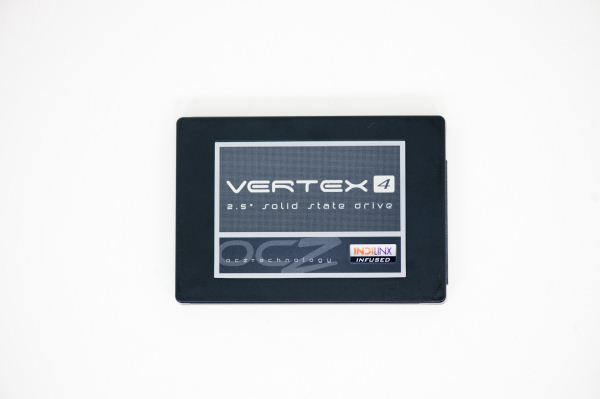



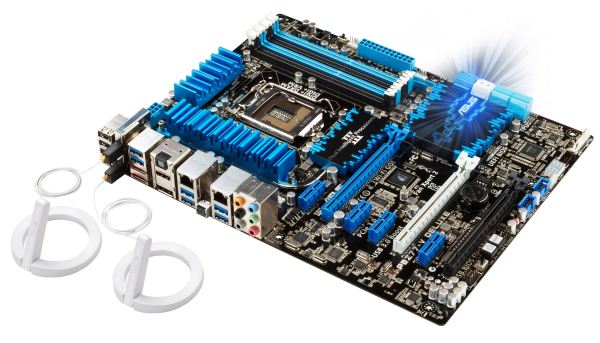

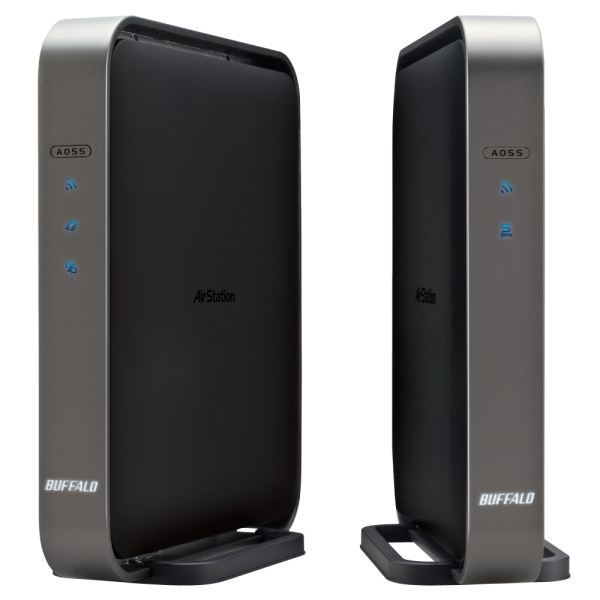

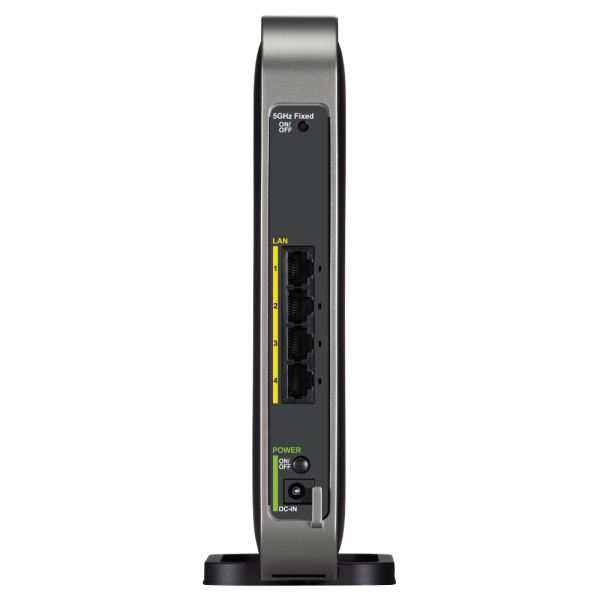
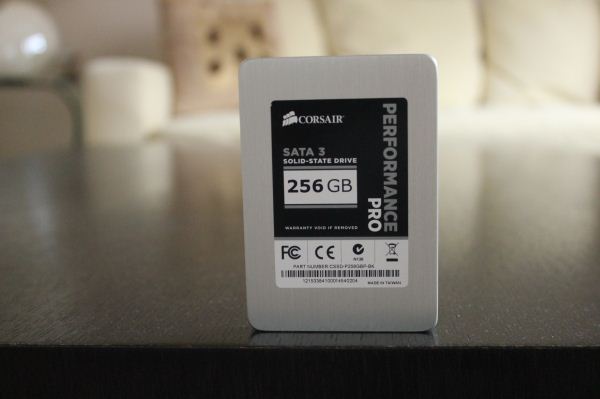

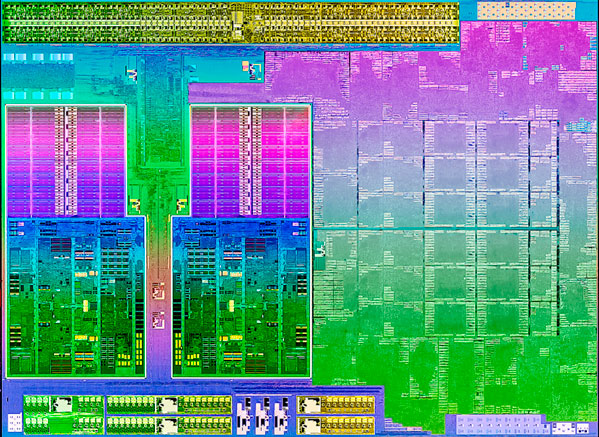
















Bookmarks